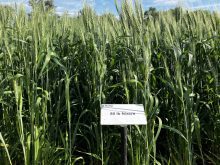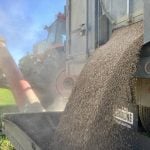Q: How do I determine the safe rate of seed-placed fertilizer for canola, wheat and barley?
A: If you’ve bought a new drill, changed openers or changed your fertilizer blends, these changes may have implications on seed safety. Many new drills have moved to wider row spacing and narrower openers. Take the time to investigate and plan now.
Many growers like to have a starter blend of fertilizer with their seed. However, too much fertilizer with the seed can reduce or delay emergence. Growers need to determine which nutrients are best applied in the fertilizer band and which should be applied in the seed row and at what rates.
Read Also

Claas brings 1000 Series SP forage harvesters to Canada
In mid-August, Claas unveiled its new line of Jaguar forage harvesters at an event in Visalia, California, deep in the heart of that state’s dairy region.
To determine safe fertilizer rates with the seed, factors such as crop type, soil texture and soil moisture at the time of seeding need to be considered.
To protect the value of your seed investment, consider the following:
- Calculate your Seed Bed Utilization (SBU): SBU is the amount of seed bed over which seed and fertilizer has been spread.
SBU = Width of SeedrowSpread x 100 / Row Spacing
Example: SBU = 3 inches x 100 / 9 inches = 33 per cent SBU - determine the actual pounds of nutrients (NPKS and micros) to be applied in the seed row.
- Cross-reference this information with guidelines for safe rates for each crop.
There’s a great deal of agronomic information to consider when determining the best options for fertilizer placement.
Twyla Jones is a manager of agronomic services with Crop Production Services in north central Alberta.















